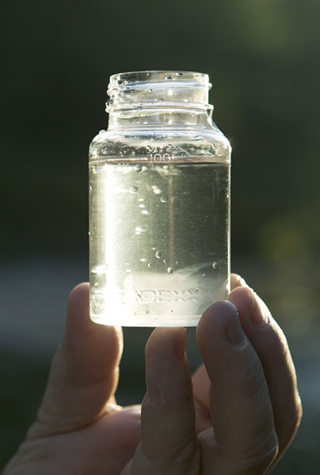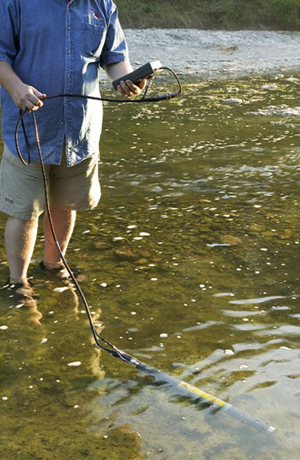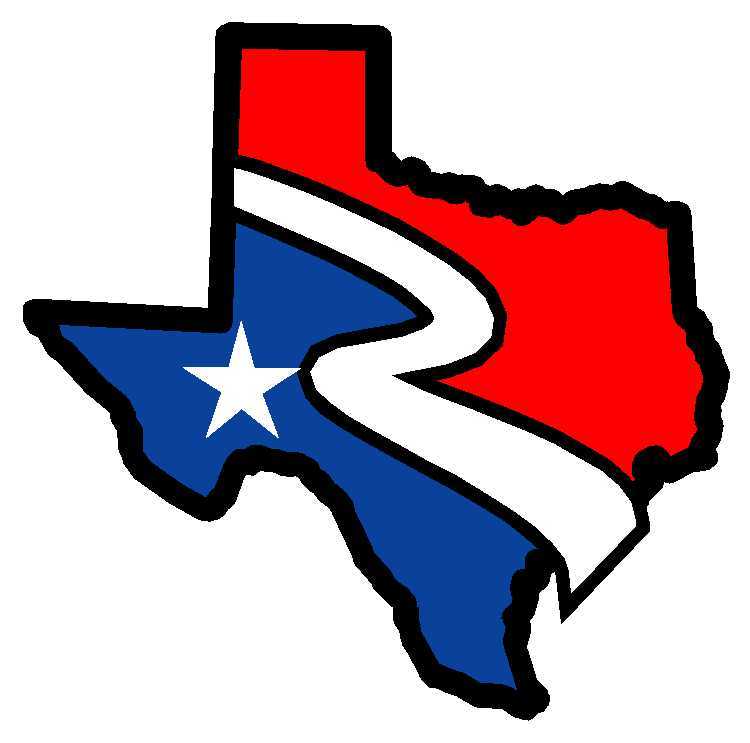The water of the Brazos River basin touches the lives of many Texans – whether they drink it, depend on it
for their livelihood or turn to it for swimming, fishing and other recreational activities. They count on the
water to be clean and able to help meet the demands of a growing state population.

The Brazos River Authority is on the case.
As a steward of basin water, it is the mission of the Authority to assure the quality of this essential natural
resource. For more than a decade, the Authority has participated in the Texas Clean Rivers Program (CRP).
The initiative was created in 1991 when the Texas Legislature passed the Texas Clean Rivers Act. The Authority
monitors water quality from some 200 sites in streams, lakes and other water bodies across the Brazos River
watershed, reports its findings to state environmental officials and works with cities, members of the public
and various other groups to find ways to keep their water clean.
As part of this effort, the Authority recently released its annual Basin Highlights Report, detailing the
results of this monitoring and highlighting quality issues and Authority responses. While the report indicated
water quality is in good shape, overall across the basin, the monitoring did find some issue areas.
In 2009, the drought was the largest negative impact on water quality in the basin, according to the report.
The two-year drought scorched the entire basin, by some measurements challenging the severity of the 1950s
drought of record and the Dust Bowl of the 1930s.
The decrease in rainfall did not cause major water quality issues in the Brazos’ main stem, but several small
and mid-sized tributaries were reduced to pools in places. Without regular water flows, bacteria and agricultural
fertilizer byproducts washed into the streams after rare rain showers and other pollutants would build up in some
of these pooled streams. Fortunately, normal rains returned late in 2009 bringing water flows to these streams and
washing away many of these issues.

However, the situation on some of these small and mid-sized streams has prompted the Authority to increase CRP
monitoring to collect information to help the Texas Commission on Environmental Quality (TCEQ), a program partner, find
ways to deal with the issue.
Authority monitoring also discovered some water quality issues at Lake Somerville near Brenham in the lower basin.
Amid concerns about lower than normal levels of dissolved oxygen and elevated pH readings, the Authority is beginning
a study of the issue. In addition to TCEQ, the Authority is collaborating with the Texas Institute for Applied
Environmental Research in the study. Both of these projects are to be funded by a Clean Water Act grant.
Collaboration with those affected by water quality in a given area is a hallmark of the
Authority’s participation in the Clean Rivers Program. In the case of Lake Somerville, participants might
respond with a Watershed Protection Plan, a means for state and local officials, businesses, organizations
and citizens to come together to discuss and plan ways to resolve the issues.
One recent success stemming from community involvement in the CRP can be seen at Lake Aquilla, north of Waco, where
monitoring found the presence of a herbicide that had apparently washed into the lake from nearby farms.
Several local communities rely on the lake for water, yet most treatment systems can’t remove the substance.
After a program that involved regular testing and working with area farmers to find ways to keep the chemical out
of runoff, officials were able to reduce the chemical in the lake to meet state standards. As a result, the lake
was removed from a list of impaired Texas water bodies.
As part of the CRP program’s collaborative effort, members of the public are encouraged to participate in the
Brazos Basin CRP steering committee meeting. There, participants discuss areas of the basin that need priority
in water quality testing.
To learn more about the Clean Rivers Program and the Authority’s role, click
here. For a copy of the
current annual report, click
here. Or, to learn how you
might participate in the next annual steering
committee meeting, e-mail Jenna Barrett at
jbarrett@brazos.org.
